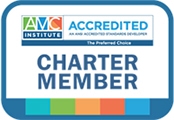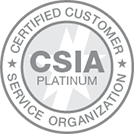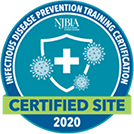Associations are under constant pressure to secure non-dues revenue streams and bring in exhibitors and sponsors to help offset costs of delivering conferences and programs to members. Often, for smaller associations, it’s the executive director or meeting staff that takes on the task of identifying corporate supporters and trying to convince them to purchase a booth or be the reception sponsor. It can be a daunting task to say the least, especially when those association professionals are not necessarily equipped with sales training and experience.
However, it’s not necessarily a lack of sales training or experience that sets associations up for failure in this area. Often, it’s the transactional approach we take when soliciting potential supporters. Associations that look at sponsors and exhibitors merely as a revenue source are not going to be successful. The days of offering an exhibit booth or reception sponsorship as the only option and expecting supporters to come back year after year are long gone.
These days, companies want to partner with associations. They do not want one-size-fits-all options for engaging with and supporting an association. They need to be able to marry up their needs with the needs of the association’s members to ensure that the time and money they spend delivers a positive return on investment. Associations have to look at supporters in the same way they look at their members. What value is this supporter getting from our association? Why should they partner with us and how can we deliver a quality experience so that they remain a supporter?
Whether you’re a large association with a dedicated sales team or a small association with just a few staff, here are three strategies to help change the way you engage with corporate partners to grow non-dues revenue.
1. Ask existing and prospective corporate sponsors about their goals
Taking the time to schedule a call with existing and prospective corporate sponsors to ask them what types of opportunities they would be interested in and how the association can help them achieve their goals will go a long way. Asking past sponsors why they haven’t been back can also provide you with powerful insight about the experience they’ve had and why they may feel that their support of your association didn’t deliver a high enough ROI to return. This insight will often lead to new ideas for developing more effective strategies and offerings. Consider establishing a corporate supporter committee where supporters can provide input and engage in strategic discussions about the association and its offerings.
2. Diversify offerings that will expand your partners’ access to members year-round
Offering year-round opportunities for sponsors to engage with your members can help ensure a higher ROI and build a stronger relationship. Consider adding on a few year-round opportunities such as vendor-led webinars, social media advertising or sponsored chapter events where corporate sponsors can provide educational content to members about their products and services and the association can use the event as an opportunity to recruit more members. Companies want as much engagement as possible beyond just exhibiting one time a year.
3. Customize packages that work best for each corporate partner
Consider packaging opportunities together to help customize the experience based upon what your corporate partners are looking for. Even with limited opportunities, you can bundle items together within one sponsorship based on the individual preferences of your supporters to extend the reach and ROI for that sponsorship. Approaching companies prior to the start of a new fiscal year and offering sponsorship packages with a few different components can help them budget in advance and see more value in what they are getting for their sponsorship. For example, adding in some low cost opportunities such as social media posts or advertising in your electronic newsletter could help sweeten the deal and extend the value of a conference sponsorship.
Take some time to consider how your association engages with existing and potential corporate supporters. You may find it’s time to reshape your view and take a new approach for developing relationships with and delivering value to these important association partners.




